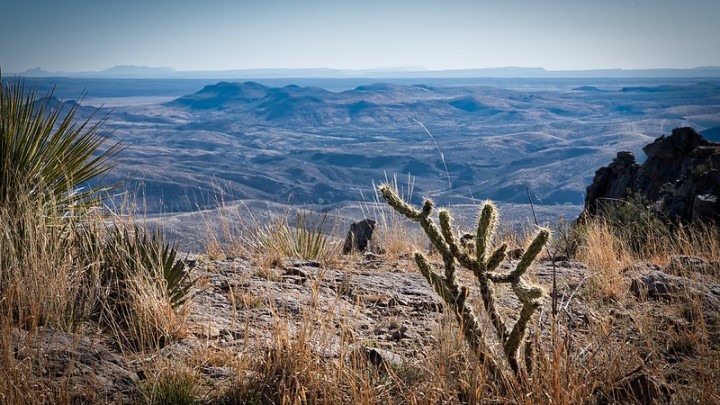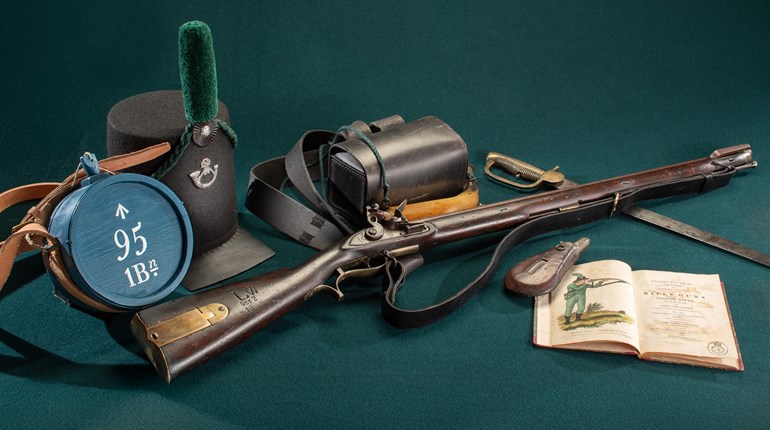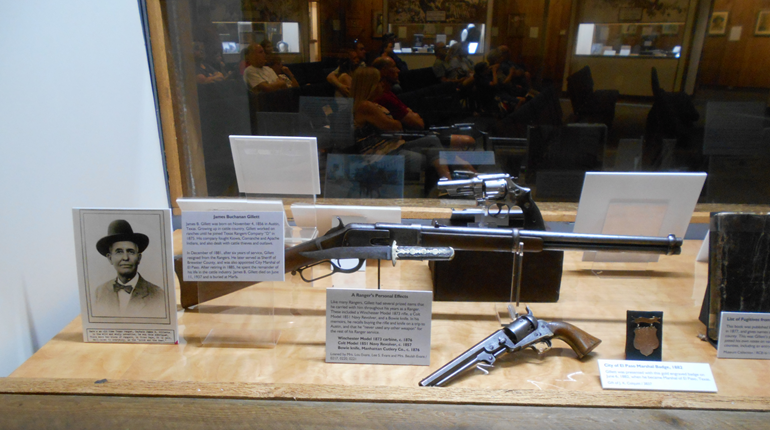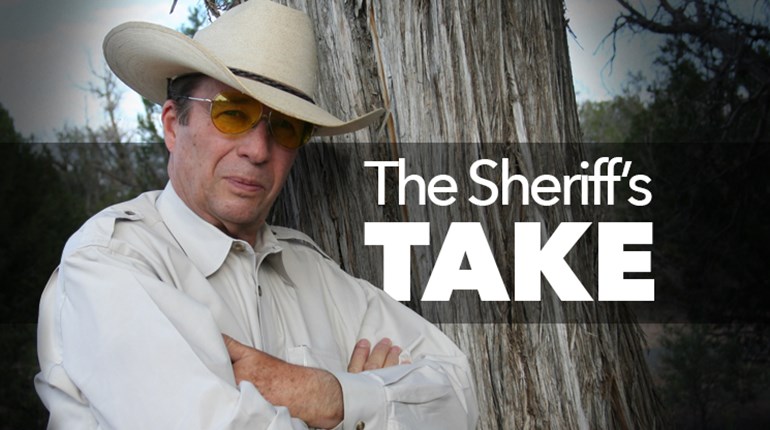
The Sierra Vieja mountains are a relatively small range that rises from the desert floor in remote Jeff Davis and Presidio counties of far west Texas. The first Europeans explored the area in the 1500s and found Native Americans living quite well throughout the region. This big country is rich with history and has been the scene for exciting tales of adventure played out by Indians, soldiers, Mexican bandits, Texas Rangers, cowboys, hunters…the list goes on. Almost 40 years ago a rancher, who spent much of his time hunting mountain lions, came upon two interesting sites on the very same day.
His hounds bayed a mountain lion along the rim rock; he shot it on a lower-level cliff below. When he climbed down to skin the big cat, he noticed a rusty pipe sticking out of some rocks and walked over to investigate the oddity. The rocks from which the pipe protruded were stacked in front of a rock over-hang. Peering inside he saw something round-shaped and bleached white: a human skull. A closer look at the pipe revealed that it was not a pipe at all, but an old rifle barrel.
After collecting the lion’s pelt, he made his way back up the rocky crag and reported his find to his father, who was waiting with a Mexican cowboy and their mounts. They made plans to gather some excavating equipment and return to the site.
The trio were riding back toward the old ranch headquarters when they encountered an animal they had never seen before. (Remember, I said he saw two interesting sights!) Some sort of tawny sheep-like ram with long, flowing hair under its neck and front legs, and heavy, curved horns that swept back like bowed arms, jumped up from the boulders ahead of the men. 
The hunter quickly stepped off his horse, shouldered his .30-30 Winchester, and shot the running animal. Later, after some investigating, he discovered it was an aoudad, an exotic import that now heavily populates the rugged west Texas mountains.
Once home, they notified the county sheriff about the human remains (out of courtesy, as they knew this was a very old grave site). Then, they gathered their gear and carefully dug through the shallow cave and sifted out its contents. What they discovered was an amazing assortment of artifacts hundreds of years old. University researchers who later examined the find determined ages and classifications of the unique artifacts.
Two ornate Spanish bits and head stalls, belt and saddle buckles, roughcast brass buttons from the 1700’s, decorative and trade beads of stone and shells, were all pulled from the dust. A large conch shell gorget was uncovered from the tomb, indicating that its owner had either traveled widely, traded well, or possibly was heir to the valued trapping that was passed from one generation to another. Cordage of braided human and horsehair, believed to have been used as parts of the horse bridles, or for other unknown purposes, were also exposed, along with silver conchas used for saddle decorations or various belts.
The Rifle
The rifle’s stock was no longer existent, but the buttplate and trigger guard were lying silently with its former owner. The warped barrel is that of a .58-caliber smoothbore flintlock muzzleloader, 46 inches in length. The breech is octagonal, while the barrel is round. The rear sight is a tiny V-notch, and the equally small front sight is made of brass. As best as the experts can tell, the rifle is likely a French trade gun from the 1700s. The rifle’s powder horn, most likely made from bison horn, contains tiny tacks that help hold the wooden cap in place on the base end.
The Man
The anthropological profile of the man is basic, at best. They do know he was male and was 30 years old or older and it is thought he lived in the general 1730 to 1760 time period. No cause of death can be determined by the skeletal remains that were found.
The Mystery
So much is left to speculation concerning this man. Was he Native American, European, both? What was he doing when he passed on? Did he die in a heroic battle, or was it a simple health issue that was deadly before the invention of modern medicine, like appendicitis? He obviously was accompanied by someone, who laid him respectfully to rest. Why did his companion, or companions, not take his possessions with them when they left?
The barrel of the rifle is severely bent. Whoever left it sticking out of the rocks wanted it out of commission from future use. But why did they mark the grave if they did not want it found? Did they intend to return? The horse gear was all also deliberately bent to disallow further use. Were these people explorers, warriors, hunters, or all of the above? Who did they not want to use the gear they left behind? Only the dead man can answer these questions…and he’s not talking.







































